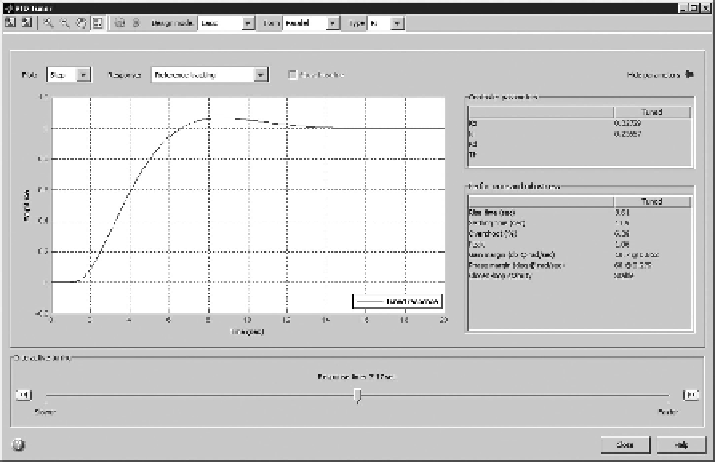Graphics Reference
In-Depth Information
(b)
FIGURE 5.6
(Continued)
user has the flexibility to manually overwrite the PID parameters for trials to
obtain better system performance. As a result, the PID controller design process
is greatly accelerated.
5.3.2 d
ata
P
RePRocessing
in
Pid c
ontRol
s
ystem
It is common that raw data values obtained from experiments can vary from very
small fractions to extremely large numbers. For example, in real-time rendering, the
geometry (vertices) required for the construction of a 3D object can yield numerical
values ranging from a few thousand to hundreds of thousands. Computations involv-
ing very large or small numbers may be difficult because of the data format required
to represent them precisely. Consequently modelling errors may occur and cause
further errors in the controller design phase.
To avoid this problem, prescaling and normalisation of numerical values are often
done. In a simulation environment, internal scaling can improve control system
performance significantly. However, the trade-off is that the scaled values may not
always be directly indicative of real world data values.
The scaling issues are relevant to data structures internal to the system model and
the controller. In implementing a PID control system, an amplifier is usually adopted
so that controller tuning process can be simplified using smaller numerical values.
An amplifier is shown in Figure 5.5 as the multiplier block that resides at the output
of the PID controller.

Search WWH ::

Custom Search